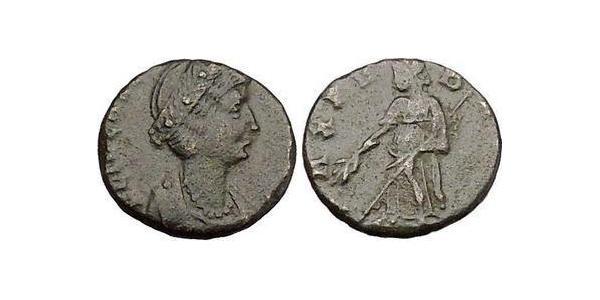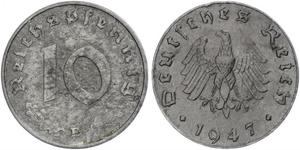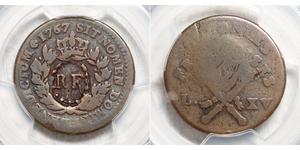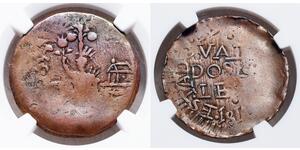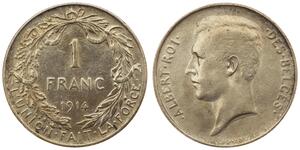[ 5453] Helena 'known as Saint Helena'- Mother of Constantine the Great - 324-328/30 A.D. Posthumous Issue. Bronze AE4 (13.5mm, 1.63 grams) Constantinople, c. 337-340 A.D. FLIVLHELENAAVG - Diademed, draped bust right. PAXPVBLICA - Pax standing left, holding branch and scepter. Provided with certificate of authenticity. CERTIFIED AUTHENTIC by Sergey Nechayev, PhD - Numismatic Expert Saint Helena (Latin: Flavia Iulia Helena Augusta) also known as Saint Helen, Helena Augusta or Helena of Constantinople (ca. 246/50 – 18 August 330) was the consort of Emperor Constantius, and the mother of Emperor Constantine I. She is traditionally credited with finding the relics of the True Cross. // Family life Helena's birthplace is not known with certainty. The sixth-century historian Procopius is the earliest authority for the statement that Helena was a native of Drepanum, in the province of Bithynia in Asia Minor. Her son Constantine renamed the city "Helenopolis" after her death in 328, giving rise to the belief that the city was her birthplace. Although he might have done so in honor of her birthplace, Constantine probably had other reasons for doing so. The Byzantinist Cyril Mango has argued that Helenopolis was refounded to strengthen the communication network around his new capital in Constantinople, and was renamed to honor Helena, not to mark her birthplace. There is another Helenopolis, in Palestine, but its exact location is unknown. This city, and the province of Helenopontus in the Diocese of Pontus, were probably both named after Constantine's mother. The bishop and historian Eusebius of Caesarea states that she was about 80 on her return from Palestine. Since that journey has been dated to 326–28, Helena was probably born in 248 or 250. Little is known of her early life. Fourth-century sources, following Eutropius' "Breviarium," record that she came from a low background. Saint Ambrose was the first to call her a stabularia, a term translated as "stable-maid" or "inn-keeper". He makes this fact a virtue, calling Helena a bona stabularia, a "good stable-maid". Other sources, especially those written after Constantine's proclamation as emperor, gloss over or ignore her background. It is unknown where she first met Constantius. The historian Timothy Barnes has suggested that Constantius, while serving under Emperor Aurelian, could have met her while stationed in Asia Minor for the campaign against Zenobia. Barnes calls attention to an epitaph at Nicomedia of one of Aurelian's protectors, which could indicate the emperor's presence in the Bithynian region soon after 270. The precise legal nature of the relationship between Helena and Constantius is also unknown. The sources are equivocal on the point, sometimes calling Helena Constantius' "wife", and sometimes calling her his "concubine". Jerome, perhaps confused by the vague terminology of his own sources, manages to do both. Some scholars, such as the historian Jan Drijvers, assert that Constantius and Helena were joined in a common-law marriage, a cohabitation recognized in fact but not in law. Others, like Timothy Barnes, assert that Constantius and Helena were joined in an official marriage, on the grounds that the sources claiming an official marriage are more reliable. Helena gave birth to the future emperor Constantine I on the 27th of February of an uncertain year soon after 270 (probably around 272). At the time, she was in Naissus (Niš, Serbia). Constantius divorced Helena at some time before 289, when he married Theodora, Maximian's daughter. (The narrative sources date the marriage to 293, but the Latin panegyric of 289 refers to the couple as already married.) Helena never remarried and lived for a while in obscurity, though close to her only son, who had a deep regard and affection for her. Constantine was proclaimed Augustus of the Roman Empire in 306 by Constantius' troops a ...
más ...
Similar Coin Groups

1 Stater Antigua Grecia (1100BC-330) Plata
grupo tiene 103 monedas / 81 precios
Add coin to this group
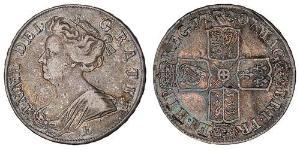
1/2 Crown Reino de Gran Bretaña (1707-18 ...
grupo tiene 23 monedas / 16 precios
Add coin to this group

1 Grivennik Imperio ruso (1720-1917) Pla ...
grupo tiene 25 monedas / 22 precios
Add coin to this group
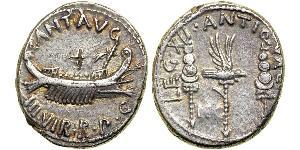
1 Denario República romana (509BC-27BC) ...
grupo tiene 43 monedas / 26 precios
Add coin to this group

1 Denario República romana (509BC-27BC) ...
grupo tiene 13 monedas / 13 precios
Add coin to this group
2025-05-27
- New coin is added to 1 Franc Bélgica Plata
1 Franc Bélgica Plata
grupo tiene 4 monedas / 4 precios
⇑
Belgium - 1 Franc 1914 - Albert I, Silver, French text
2025-05-24
- Historical Coin Prices
Usted podría estar interesado en …

